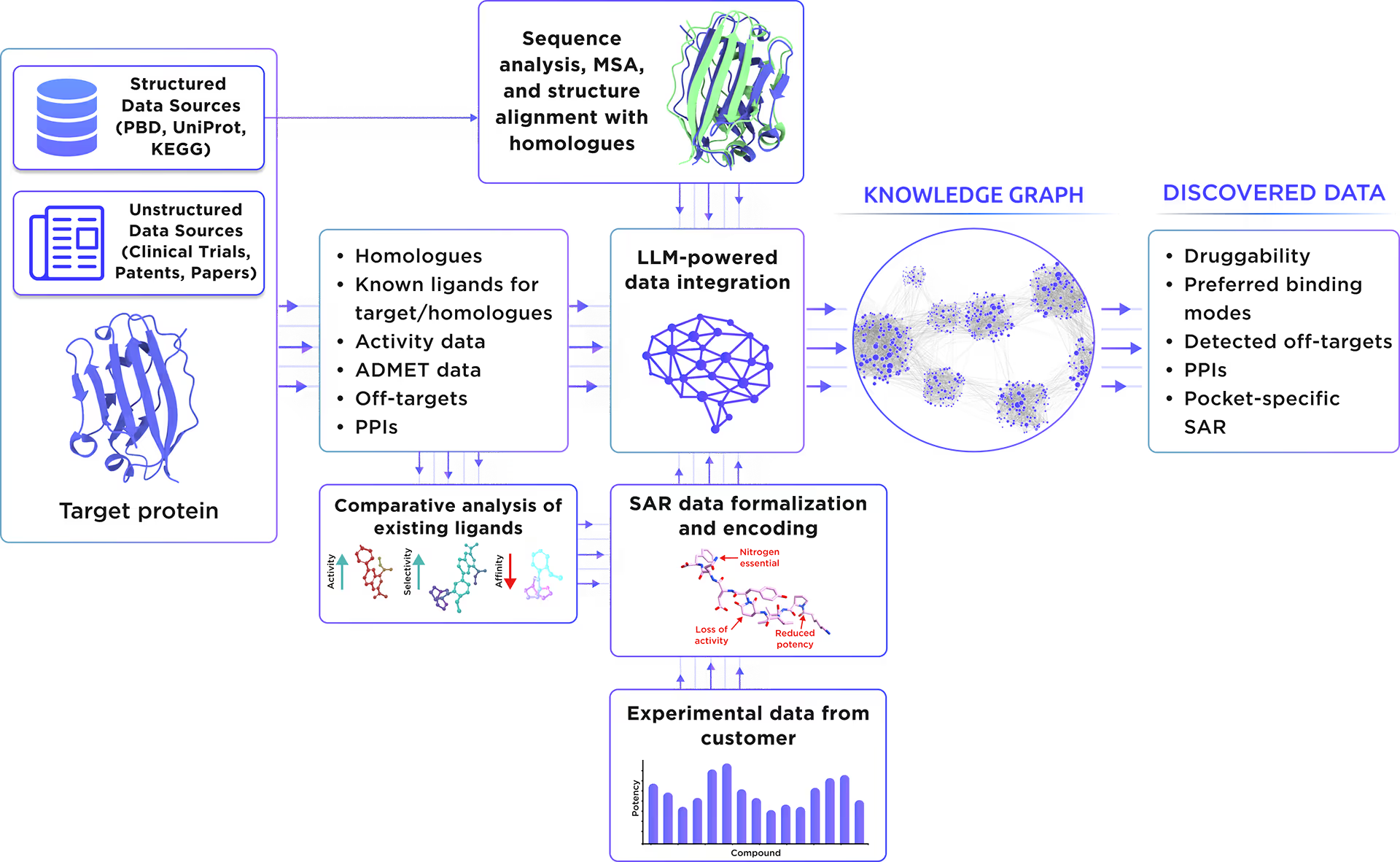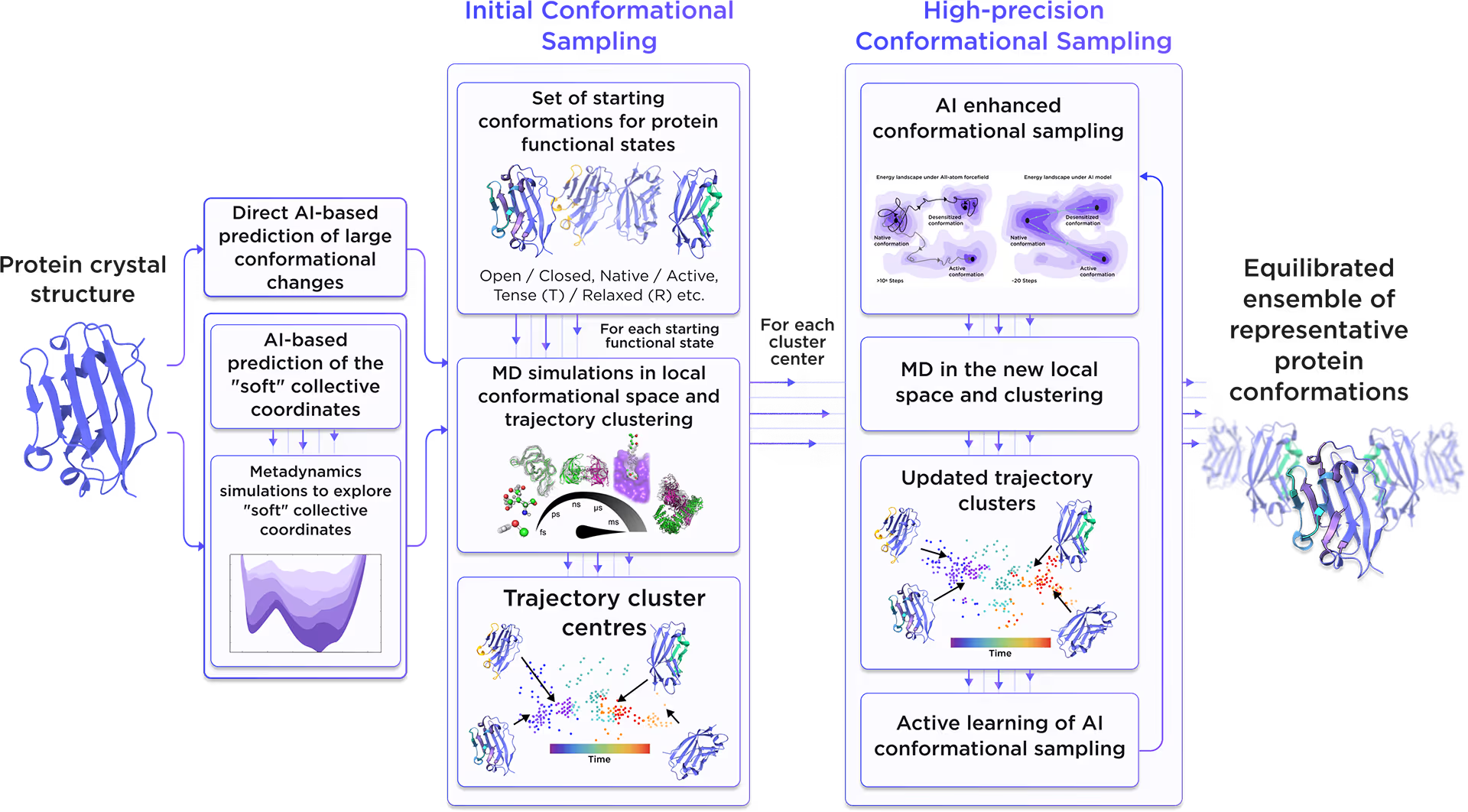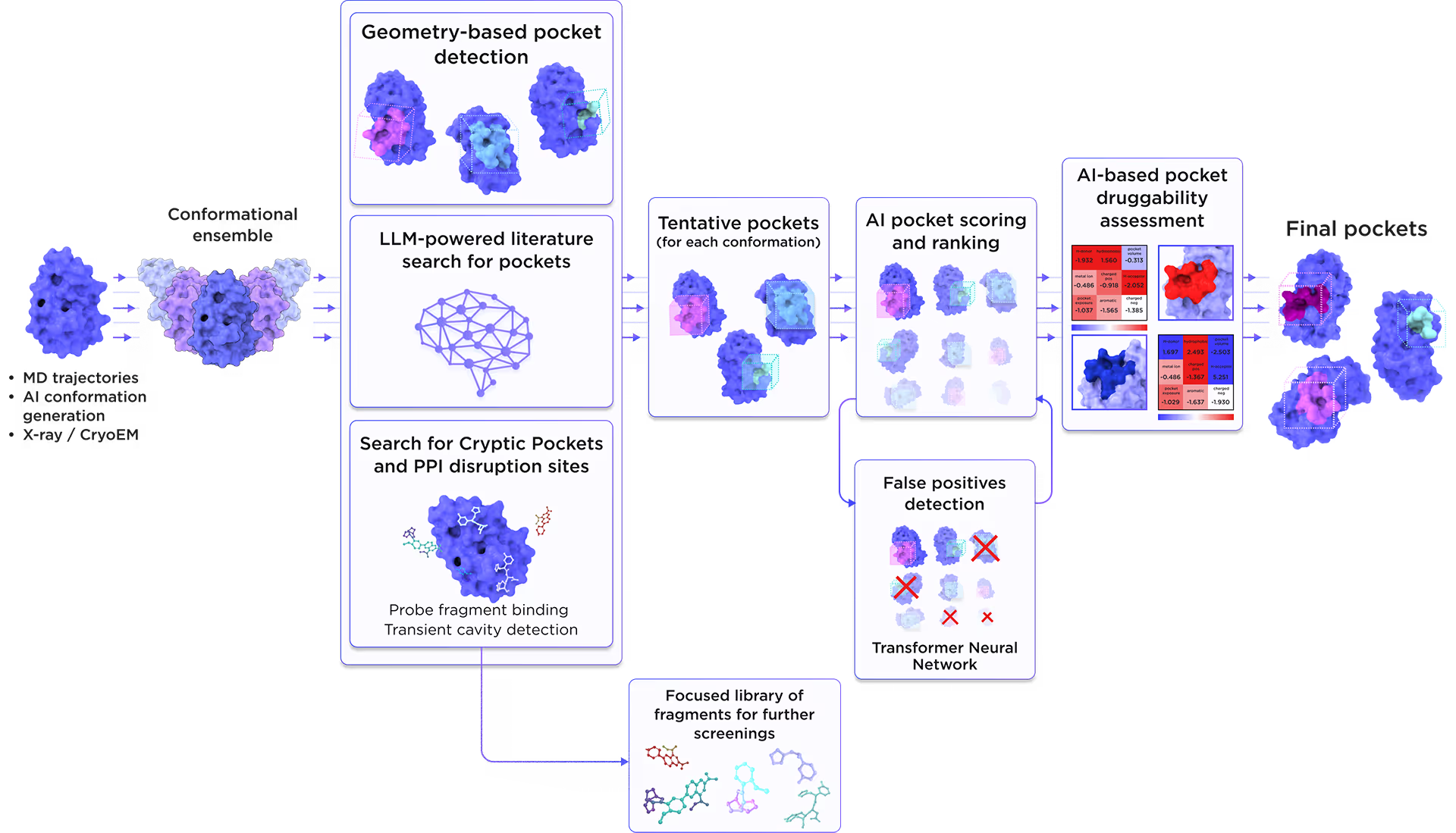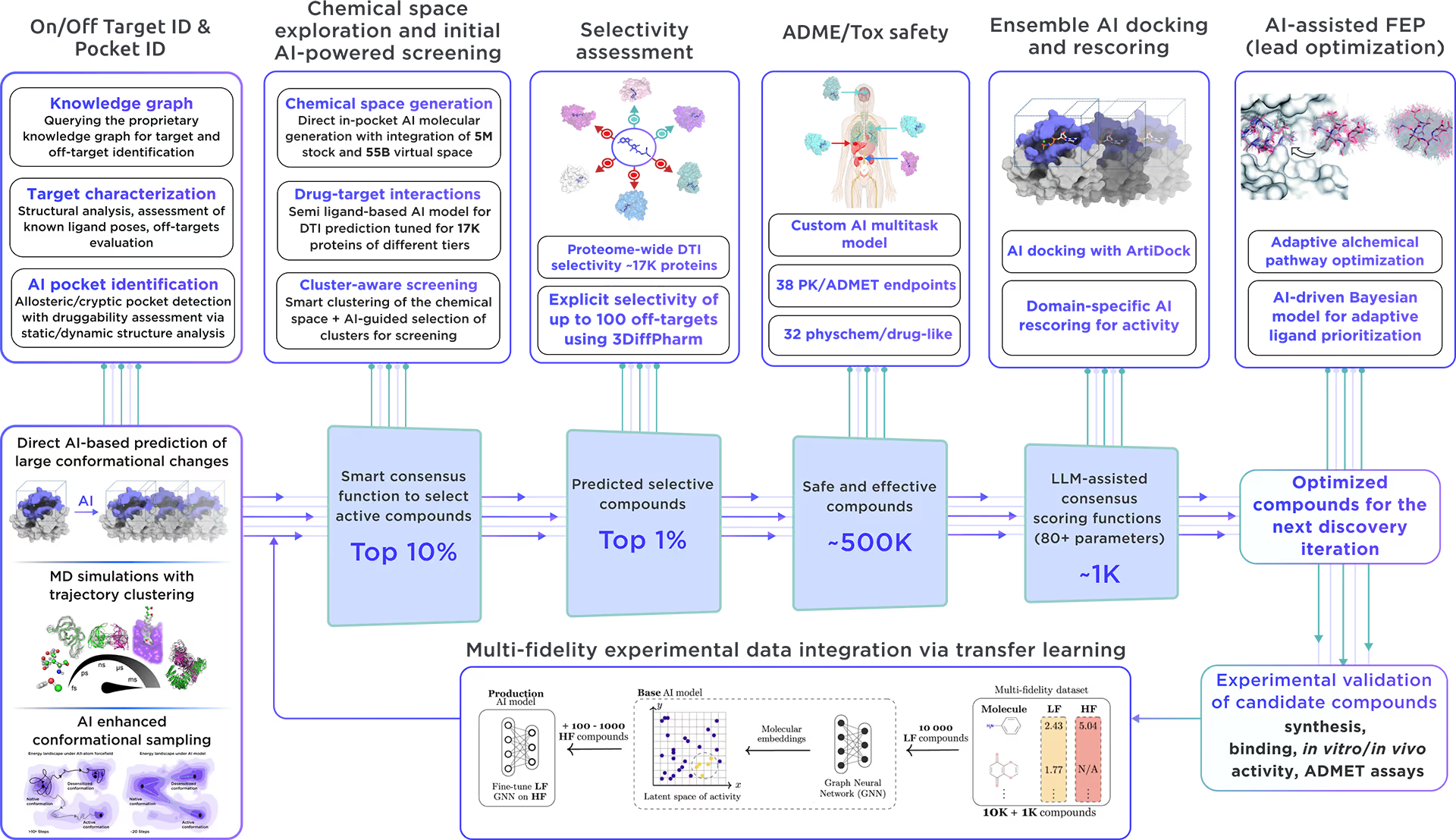

Available from Reaxense
This protein is integrated into the Receptor.AI ecosystem as a prospective target with high therapeutic potential. We performed a comprehensive characterization of Histidine-rich glycoprotein including:
1. LLM-powered literature research
Our custom-tailored LLM extracted and formalized all relevant information about the protein from a large set of structured and unstructured data sources and stored it in the form of a Knowledge Graph. This comprehensive analysis allowed us to gain insight into Histidine-rich glycoprotein therapeutic significance, existing small molecule ligands, relevant off-targets, and protein-protein interactions.

Fig. 1. Preliminary target research workflow
2. AI-Driven Conformational Ensemble Generation
Starting from the initial protein structure, we employed advanced AI algorithms to predict alternative functional states of Histidine-rich glycoprotein, including large-scale conformational changes along "soft" collective coordinates. Through molecular simulations with AI-enhanced sampling and trajectory clustering, we explored the broad conformational space of the protein and identified its representative structures. Utilizing diffusion-based AI models and active learning AutoML, we generated a statistically robust ensemble of equilibrium protein conformations that capture the receptor's full dynamic behavior, providing a robust foundation for accurate structure-based drug design.

Fig. 2. AI-powered molecular dynamics simulations workflow
3. Binding pockets identification and characterization
We employed the AI-based pocket prediction module to discover orthosteric, allosteric, hidden, and cryptic binding pockets on the protein’s surface. Our technique integrates the LLM-driven literature search and structure-aware ensemble-based pocket detection algorithm that utilizes previously established protein dynamics. Tentative pockets are then subject to AI scoring and ranking with simultaneous detection of false positives. In the final step, the AI model assesses the druggability of each pocket enabling a comprehensive selection of the most promising pockets for further targeting.

Fig. 3. AI-based binding pocket detection workflow
4. AI-Powered Virtual Screening
Our ecosystem is equipped to perform AI-driven virtual screening on Histidine-rich glycoprotein. With access to a vast chemical space and cutting-edge AI docking algorithms, we can rapidly and reliably predict the most promising, novel, diverse, potent, and safe small molecule ligands of Histidine-rich glycoprotein. This approach allows us to achieve an excellent hit rate and to identify compounds ready for advanced lead discovery and optimization.

Fig. 4. The screening workflow of Receptor.AI
Receptor.AI, in partnership with Reaxense, developed a next-generation technology for on-demand focused library design to enable extensive target exploration.
The focused library for Histidine-rich glycoprotein includes a list of the most effective modulators, each annotated with 38 ADME-Tox and 32 physicochemical and drug-likeness parameters. Furthermore, each compound is shown with its optimal docking poses, affinity scores, and activity scores, offering a detailed summary.
Histidine-rich glycoprotein
partner:
Reaxense
upacc:
P04196
UPID:
HRG_HUMAN
Alternative names:
Histidine-proline-rich glycoprotein
Alternative UPACC:
P04196; B9EK35; D3DNU7
Background:
Histidine-rich glycoprotein (HRG), encoded by the gene with accession number P04196, is a multifunctional plasma protein. It interacts with various ligands including heme, heparin, thrombospondin, and plasminogen, playing pivotal roles in processes such as immune clearance, cell adhesion, angiogenesis, and coagulation. HRG's ability to bind to different cell types and molecules underscores its significance in vascular biology and immune response regulation.
Therapeutic significance:
Thrombophilia due to histidine-rich glycoprotein deficiency highlights the critical role of HRG in hemostasis. Understanding HRG's functions and interactions could pave the way for novel therapeutic approaches in managing thrombotic disorders and enhancing immune surveillance and tumor angiogenesis regulation.